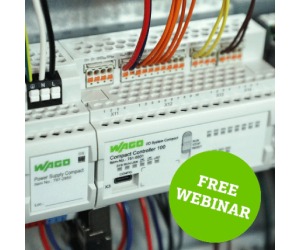Rethink Robotics Rises from the Ashes, Better, Faster, Stronger
October 28, 2024
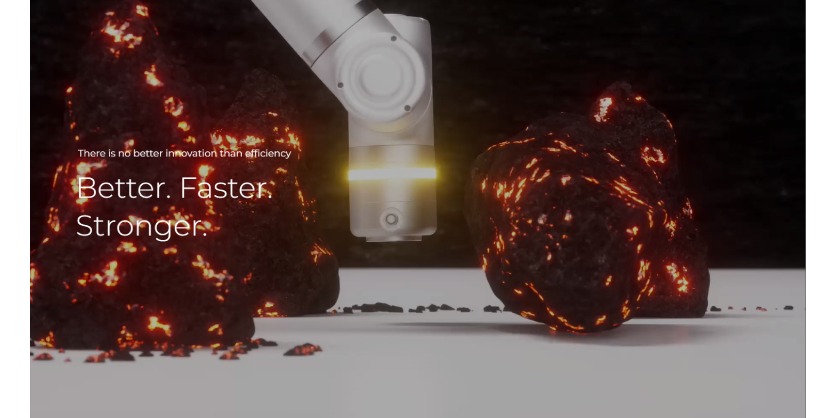
By Krystie Johnston
Rethink Robotics is making a powerful comeback. They recently relaunched, rebranded, and revealed a new lineup of products at IMTS 2024. Their Rethink Reacher cobots have been designed for precision and performance, their Rethink Ryder autonomous mobile robots (AMRs) offer effortless efficiency, and their Rethink Riser elevates operations by integrating cobot, AMR, and an interchangeable control box. Julia Astrid Riemenschneider, VP of Business Development for Rethink Robotics, discusses the company and what they bring to the market.
Rethink Robotics was founded in Boston, Massachusetts, by Rodney Brooks, a robot rockstar and head of MIT’s Computer Science and Artificial Intelligence Lab. The company was successful in bringing thousands of collaborative robots into the field, but financing issues and struggles to meet repeatability and precision needs of industrial robots forced Rethink Robotics out of business in 2018. Riemenschneider explains that they were acquired by HAHN Automation, who brought them into their portfolio known as the United Robotics Group. Under this leadership, their accomplishments were recognized, and shortcomings were addressed.
Rethinking Collaboration
“We are bringing Rethink Robotics back to the North American market – solely – because United Robotics Group is a European-based company, and Rethink Robotics is a U.S. brand. We believe there is a need for a U.S. brand in the North American market, and that is why we have developed products that meet these requirements,” says Riemenschneider. As VP of Business Development, she is responsible for marketing and sales, and believes the time is right for Rethink Robotics to make a comeback in this region because they have developed a line of products that customers are asking for.
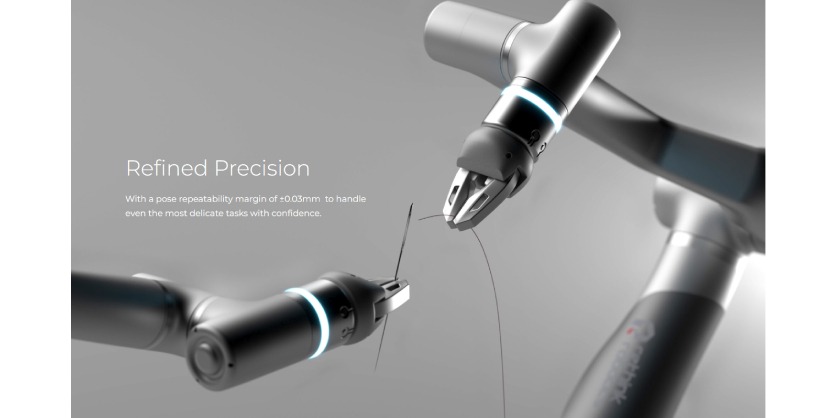
Riemenschneider had been trying to sell lightweight mobile robots in the U.S. as the United Robotics Group, but learned these were not a good fit for the U.S. market. “I had been calling on a lot of manufacturing companies,” she recalls, “and they always said, ‘Julia, in the U.S. we are lifting bigger and heavier payloads.’ So, listening to these needs, we developed the portfolio for Rethink Robotics which meets the requirements of heavier payloads.”
For example, their cobots’ collaborative robot arms offer comprehensive payloads from 7 kg to 30 kg (15 to 66 lb.), and a reach from 800 mm to 1,600 mm. They feature six degrees of freedom, are IP65 rated, and have a repeatability of ±0.03mm, making them appropriate for even the most demanding tasks.
Integrates Seamlessly into Intelligent Fleet Management Systems
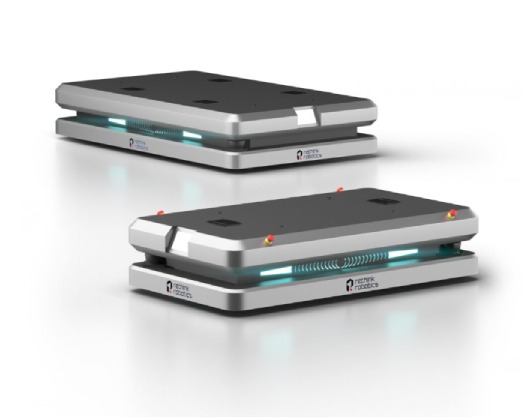
“Plus, we have a mobile platform which is also ready to carry heavier payloads,” adds Riemenschneider. Rethink Robotics’ AMR comes in two options: Ryder 1400, which manages oversized loads up to 1,400 kg, and Ryder 550, perfect for tasks lighter than 550 kg.
Both feature an advanced sensor system that ensures safety according to industry standards for fully autonomous navigation, which integrates seamlessly thanks to Rethink Robotics’ intelligent fleet management systems. Taking the typical length of a work shift into account, these AMRs have an uptime of eight hours – which can be extended further thanks to embedded intelligence that allows them to predict appropriate times to perform an intermediate charge through induction.
Rethink Robotics’ new lineup of products was meticulously engineered to achieve reliable safety and efficiency in human-machine collaborations throughout any industrial operation across North America. “We are very proud to bring Rethink Robotics back to life. During and after IMTS, we received a lot of positive feedback from the market. Now, we take it from there, busy keeping up with customers and working on automating their applications with our robots,” says Riemenschneider.
Relaunching and rebranding require fortitude and Rethink Robotics has fulfilled this feat without flaw. Riemenschneider says that they learned a lot from the company’s experience with their first cobots, Baxter and Sawyer. They listened to their customers and developed solutions that work. “We made these robots faster, better, and stronger,” she says. Not every company that fails recovers, so it is gratifying when an underdog perseveres and rejoins the game. It is exciting to see what they have learned and what they now bring to the market.
Innovation and Integration for Smarter Solutions
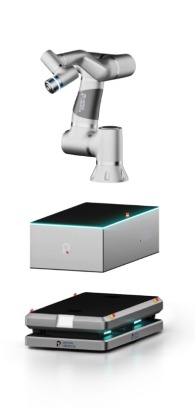
In addition to the Reacher and the Ryder, Rethink Robotics also debuted the Riser, a mobile manipulator robot (MMR) that consists of an AMR and a cobot mounted on a detachable container that carries the control box and a battery. MMRs are becoming popular in industries like life science and manufacturing. Riemenschneider has experience using MMRs for laboratory automation in notable pharmaceutical companies and identified a use case for the Riser that saves money and improves return on investment.
“In this industry, there is an approach right now that everyone is looking for applications with MMRs.” However, they are commonly rejected because the MMRs end up as a stationary solution, loading an instrument like a centrifuge or analyzer.
“Since the cobot and the AMR are mounted and wired together, the AMR can’t move while the cobot is performing its job. This leads to a lack of efficiency and delayed ROI on the mobile robot.” Seeing potential, but not wanting to offer a redundant product, she challenged the Rethink Robotics team to develop something smarter. And they rose to the occasion.
“Riser’s components are detachable. An additional battery in the container allows the cobot to work independently. To increase this independence, the battery can be charged through induction, which makes the set up easier and autonomous. Thanks to Ryder’s integrated lift feature, the mobile robot can deliver the container at any given station in a lab, a manufacturing plant or somewhere else and takes off while the robot stays where it is, stationary, and fulfills the job.”
Riemenschneider sees this as another great lesson for Rethink Robotics and views it as a win because it is a real market use case that has already received a lot of positive feedback since the relaunch. “It is a great concept, a great idea. And a lot of opportunities arise, especially when you combine it with a tool changer system, endless opportunities come up. That way, the robot seamlessly integrates in the existing workflows. This is what customers want. Cobots are built to support existing workflows, not to redesign them,” Riemenschneider says.
Ready for the North American Market
While the possibilities of Rethink’s new lineup of products are attractive, it might be the price that is most appealing. Riemenschneider says that Rethink has invested time into understanding how the North American market uses robotics such as cobots, AMRs, and MMRs, and has conducted market research to develop solutions that align perfectly with what customers are looking for. “Our robots are very, very close to the market leaders [in terms of quality and technology], but below them [in terms of cost]. The combination of our platform and the AMR – since it is all sourced in our house – is even less expensive because we sell the bundle. The box and the AMR together is even less expensive than if you were buying them individually,” she says.
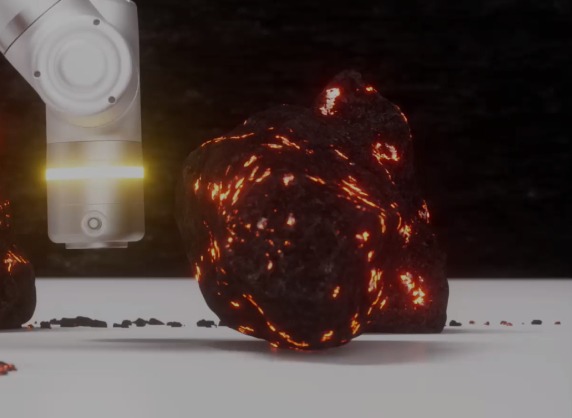
Rethink Robotics is making a powerful comeback, and they have thought hard about every facet of their new product lineup. For example, their robots come ready to use out of the box for the customers who want something they can run with right away. And they are also programmable through ROS, Python, and C++ for the more advanced users who want to take advantage of open architectures and work with other vendors’ technologies in their ecosystem.
Riemenschneider points out that this approach has been intentional since the relaunch. “We have the user and the customer in mind because that is part of their brand name. ‘Rethinking’ means we do not stick to what we know and what we have. Listening and rethinking the solution is what we do.”
Rethink Robotics has hit the ground running since their return at IMTS 2024, coming back better, faster, stronger. With North American headquarters in Boston, Massachusetts, and a global presence, they are well positioned to serve the U.S. and Canadian markets, as well as other countries. Riemenschneider says they are actively looking for partners in distribution and systems integration, so reach out to them today if you are interested.
More Information
Related Story
Rethink Robotics Launches Detachable Mobile Manipulator Robot at IMTS 2024
Announcing a major relaunch and rebranding, Rethink Robotics returns to IMTS, unveiling a full portfolio of new robotics products, including seven Rethink Reacher cobots, its Rethink Ryder AMR line, and the Rethink Riser MMR. Combining a Rethink Ryder AMR with a Rethink Reacher cobot and a portable battery box allows mobile manipulation to be performed at new levels of efficiency.



